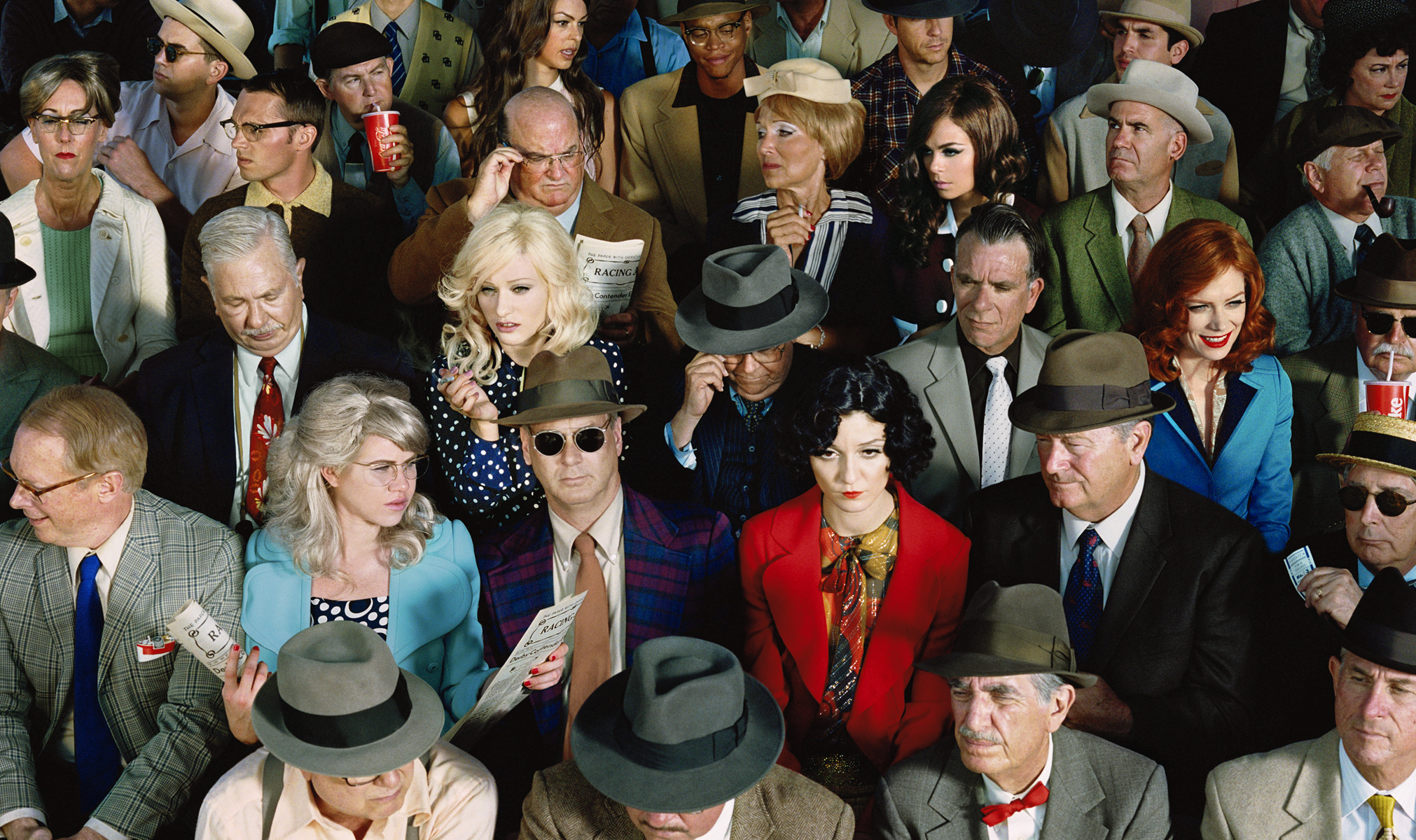
The lacquered glamour of Alex Prager’s visual world is underpinned by melancholy and despair. Beautiful women stand in the middle of train tracks, suited blondes are locked in boxy rooms and Hollywood actresses run into brick walls as they attempt to jump from four-storey buildings. The pull between aesthetic beauty and internal pain is examined in Prager’s sleek production values and lingering shots.
In her work, the LA-based artist approaches a philosophical problem that’s haunted her for the last five years: how can the isolated self remain alive in a crowd? It’s a personal investigation. Prager has always questioned the level of autonomy offered to individuals in crowded settings, something that has been hard to judge where she lives, in California, a place where crowds pretty much don’t exist. “Coming from LA, you don’t really experience a crowd unless you seek it out at Dodger Stadium or something like that,” she says. “Before I travelled to London and New York for work, I really hadn’t been around crowds. Not in such a condensed and potent way. Being on the New York subway and on the sidewalks was just a series of constant disturbances and getting distracted and just feeling packed in like a sardine.”
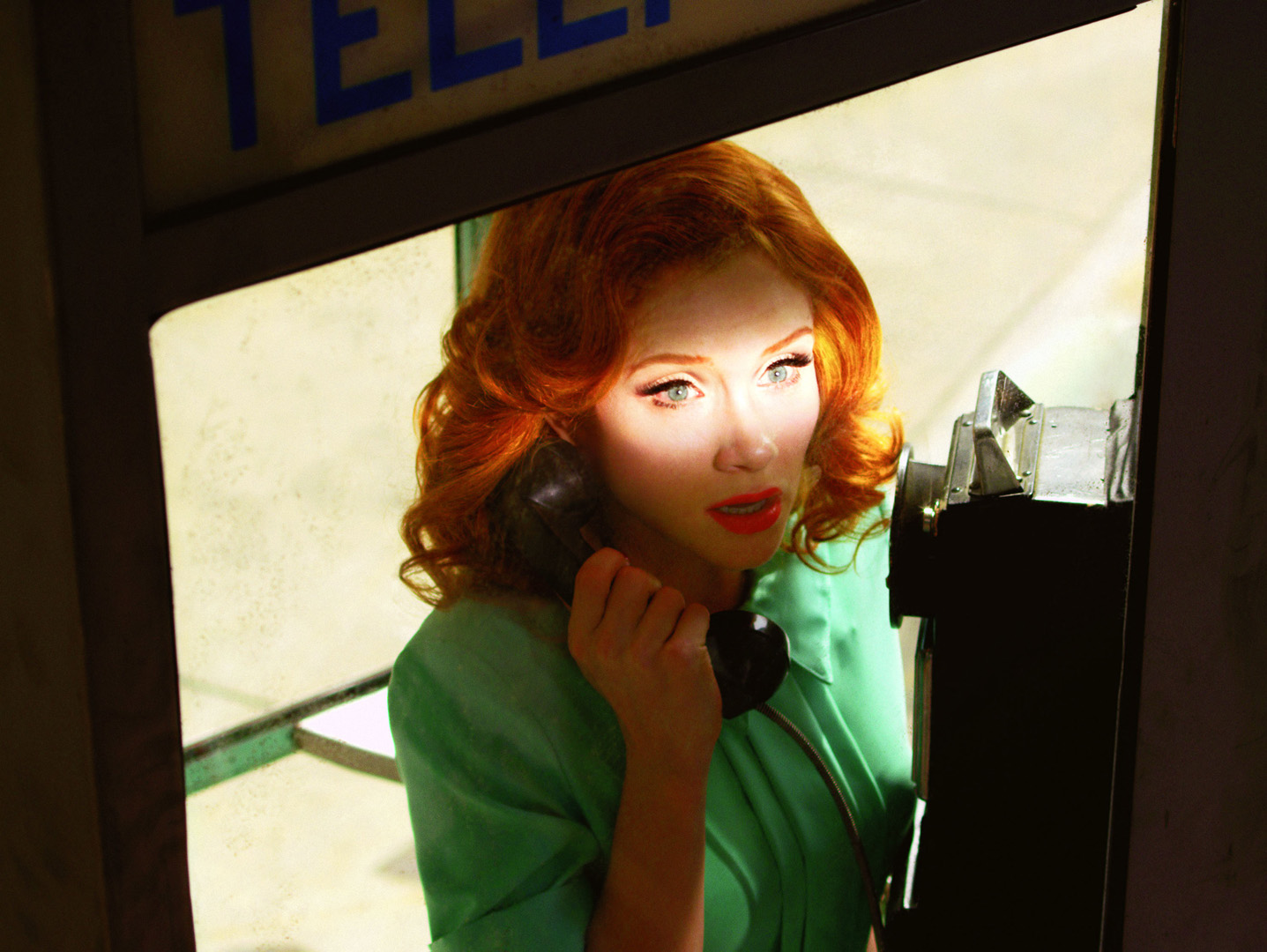
Shot in 2013, the independent short A Face in the Crowd deals with her existential phobia of crowds, which reached crisis point in 2010 after she had her first photograph exhibited at New York’s Museum of Modern Art in the show New Photography. “After the MoMa show was when it really reached a climax and I had this intense, almost out-of-body experience. I was suddenly asked to do public speaking and talks about LA. I got a really overpowering physical stage fright. It wasn’t the kind of stage fright where you get nerves or you shake, it was physically paralysing. So I was dealing with that in A Face in the Crowd, the whole idea of stage fright. I started to think about how our culture makes us communicate differently, especially through social media. The ways that people take on different characters in different situations, how sometimes that’s real and sometimes it’s not. Social media provides such a false filter on all aspects of life.”
“I started to think about how our culture makes us communicate differently, especially through social media“
Her narratives are a tradeoff between ambiguous plot lines and sudden, grand abstract statements. “Everything I do is based on this false hazy world colliding with raw human emotion. I was not trying to re-create real crowd scenes at all. I was forcibly manufacturing these elements. I want things to feel disjointed, I want my main character to seem disturbed and out of this world. Is she real? I want viewers to question this.”
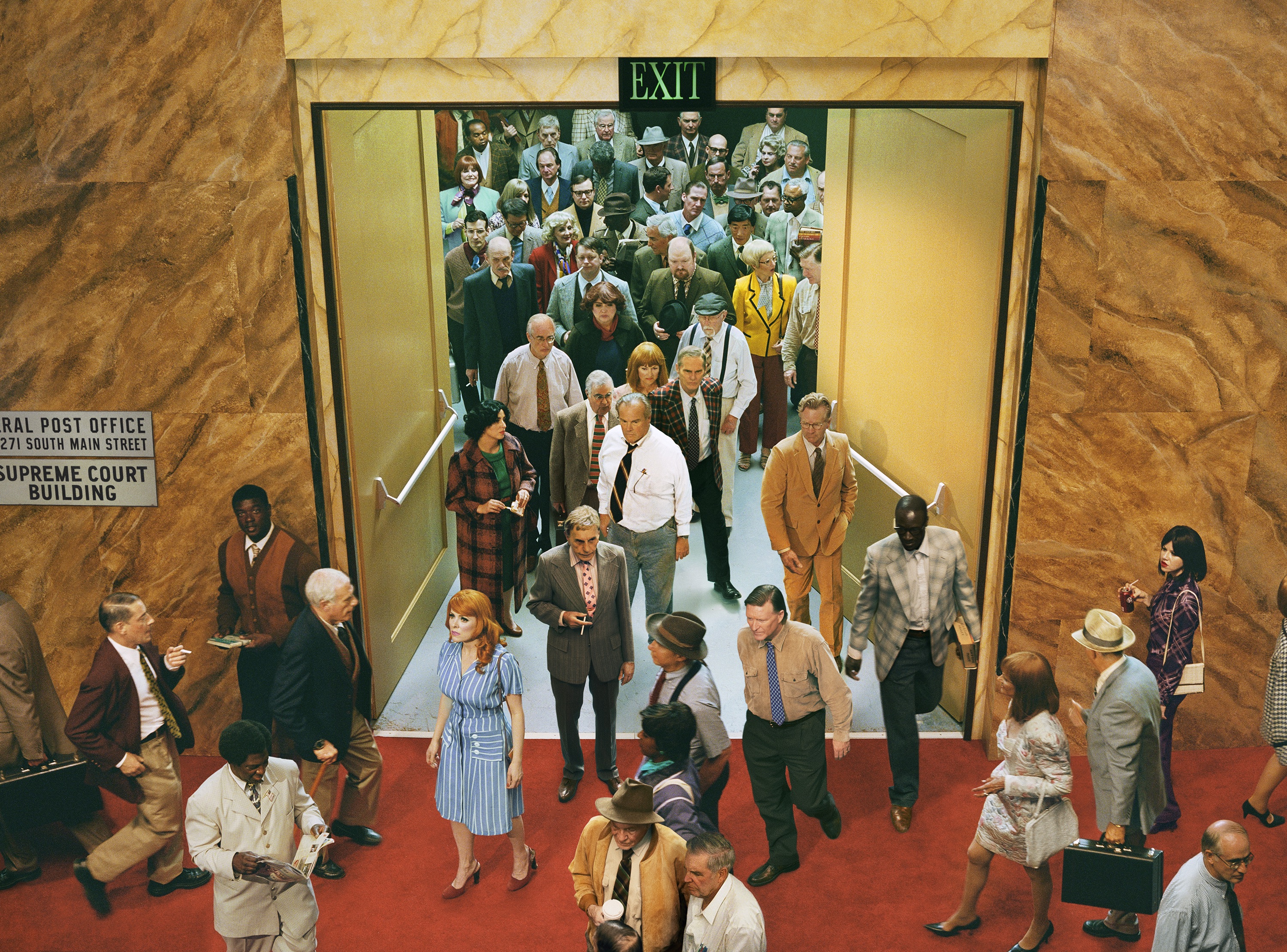
Through suspense-inducing scores, frantic eye movements and the protagonist’s varying sense of calm and hysteria, Prager examines the contrasting emotions of an introvert. “The films are a response to all the things I was going through at that time and how I’d always felt in big public groups. I wanted to look at how we react as people to crowds because, for me, it was presenting a lot of really big issues.”
In the 2010 work Despair, Prager’s female lead suffers from the same problem. Her porcelain skin and rich red hair framed by the panelled glass of a phone booth from which she receives a panicked call, she looks petrified. Again, there’s a contrast between the reassurance offered by her physical beauty and signs of inner hysteria. It’s a theme that crops up in Prager’s stills too, such as Desiree in her The Big Valley (2008) series, which sees a dolled-up teen reclining submissively while smoking.
Similarly the lead actress in A Face in the Crowd stares into the movement of a busy pedestrian group from a drab room, equally compelled and repulsed by the activity—enamoured by a red-faced man lighting then puffing exaggeratedly on a cigar but horrified by the fast pace of the people she observes. She’s happy, even to some extent thrilled, watching the world pass by from the comfort of her own bubble. She exemplifies the crisis of the modern introvert who feels surrounded by people.
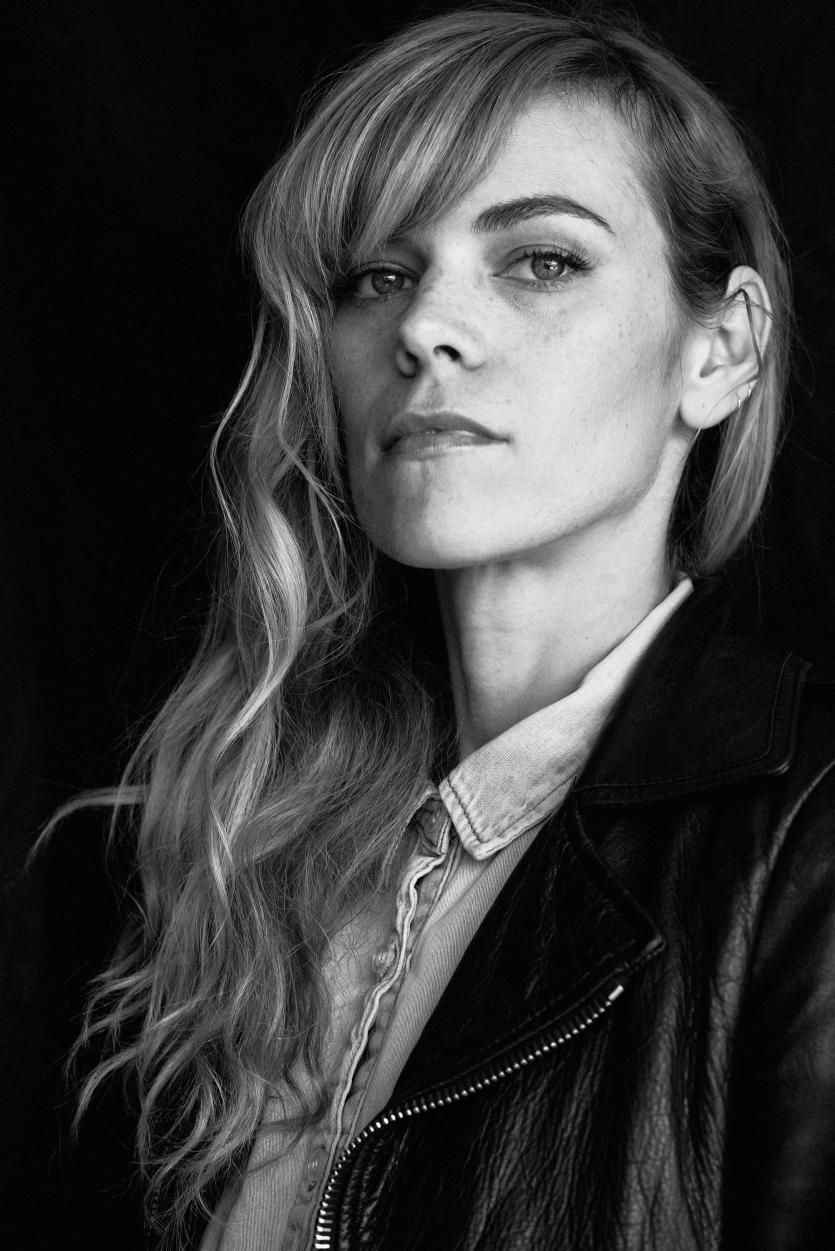
Prager’s film and photographic works reference a wide scope of cinematic trends from the last hundred years, including Golden Age Hollywood and 1970s Scorsese—though Hitchcock comparisons jar slightly. “I get compared to Hitchcock. So much so that I did a picture of a girl surrounded with birds because I thought: “You want Hitchcock, here’s Hitchcock!” It was a fuck you. Because I’m not him. I studied his tricks and I studied him, but I reference a lot of people.”
Her fusion of various influences creates visuals that are by turns awkward, tense and thrilling. Her three shorts Despair, A Face in the Crowd and La Petite Mort channel a love for the work of William Eggleston and Philip-Lorca diCorcia. It was Eggleston who inspired her career: “When I was 18 I was completely directionless and working admin jobs in LA. I saw a William Eggleston exhibition at the Getty Museum and that was it.” The following morning she bought a Nikon camera and some darkroom equipment on eBay. Prager paid homage to the photographer in Nancy from The Big Valley—a woman sits holding a short drink and gazing from the window of an aeroplane.
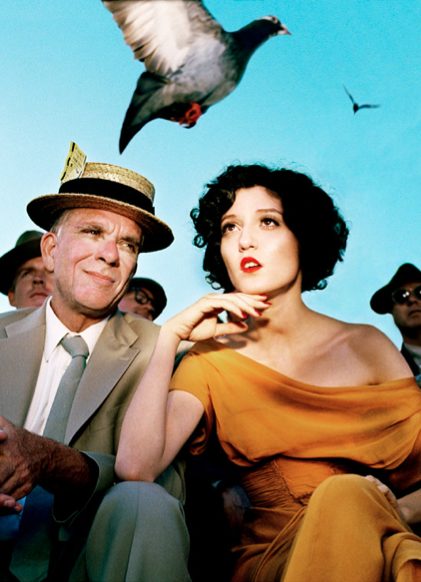
Her biggest aesthetic influence is LA—the home of Hollywood, wannabes, loners, cars and no crowds. The city’s pulp-fiction tradition informs some of Prager’s trademarks such as overdone make-up, film-noir storyboards and disturbed protagonists. “Everything in Los Angeles is so manufactured.” she says definitively. “Everything that gets made in LA feels very Hollywood. For example: the bars. You walk in and it looks like it’s a hundred years old, but then you realize what you thought was grime is actually a set designed to look like that. And you realize that the guy who designed this place was the design guy on Scorsese’s last picture.”
The Big Valley (2008) series dealt with the LA contrast, beauty but a sense of loss exacerbated in such arid landscape. “I mean it’s ridiculous how fake a lot of the places are. But it’s creepy in an inspiring way. We live in a strange alternative reality here, but then there are people here with real things and emotions and that’s all happening too. It’s a beautiful contrast.” Prager shoots a lot of her work in the California desert—the bright light amplifies her staged scenes. “My pictures look very saturated, which comes mostly from the light in California. The light is very different. If you hold anything up to the sky here it’s going to look more saturated. Which you just cannot fake.”
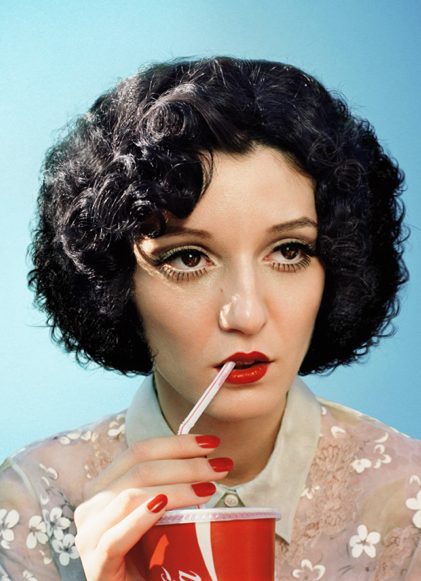
Prager’s vision isn’t easy to realize. She has a large entourage that includes stylists, hair and make-up artists, casting directors and cinematographers, all of whom are on board with the Prager aesthetic. ‘I work with the same costume designer, the same make-up team, and we go through every single look before we shoot. Everyone understands what I like from an image. For example, those fake moustaches for men—we use those like eyebrows, which was an assistant’s suggestion. I love overdone caked-on make-up on film. Like when old ladies have purple hair but they don’t mean to, I really like that.”
Even before she began directing videos, Prager’s work already had a cinematic quality. “The way my first film [Despair, 2010] came about was to do with my photographic series The Big Valley. People kept coming up to me and saying, ‘These pictures look really cinematic.’ And this big producer approached me and said, ‘These stills are so cinematic, if you ever think about making a film, please let me know.’ And I was absolutely ready at that point. So that left me to try and show, in a more surreal
way, what it was that had happened, before and after the Big Valley stills.”
“Her fusion of various influences creates visuals that are by turns awkward, tense and thrilling”
Despair defined Prager’s visual practice, shifting seamlessly between snappy edits and lingering shots, taking a viewfinder and sliding it to the left and right of her still images, presenting the story behind the made up face. “The whole experience of directing was a real learning curve for me in what the difference between still photography and film is. The main shot of Bryce Dallas Howard when her eyes are filled with tears—I never would be able to get her to that place had we done a still photo shoot. We were shooting this intense scene where her emotions go from 0 to 100. Stills show the staged quality. Film shows the emotion.”

Her work hinges on a smartly judged contrast between composed exterior and inner existential anxiety that often underpins human experience. Glossy magazines want a part of this arresting realism for their pages and Prager has done high-fashion shoots for Vogue and W magazine, both Condé Nast titles. “It’s fun to collaborate every once and a while and it’s cool because it forced me to think differently when I shoot pictures.”
She insists on complete creative control, though; the only magazine staffer she’ll collaborate with is the legendary New York Times photo editor Kathy Ryan. “We have an incredible relationship,” she says. “Working with Kathy on anything is great for me.” Motifs—such as the desert, which appeared in The Big Valley, La Petite Mort and her recent advert for Mercedes featuring Lara Stone— recur across her commissioned and personal work. From branded work to film projects, Prager’s work is an immersive process—it can take months to shoot one film. But it’s also a cathartic practice. The final scene of A Face in the Crowd may say it best. Sick and tired of her bare room with only a chair and table, the heroine releases herself from imprisonment and walks into the crowd. Not quite smiling, but certainly not frowning either.





